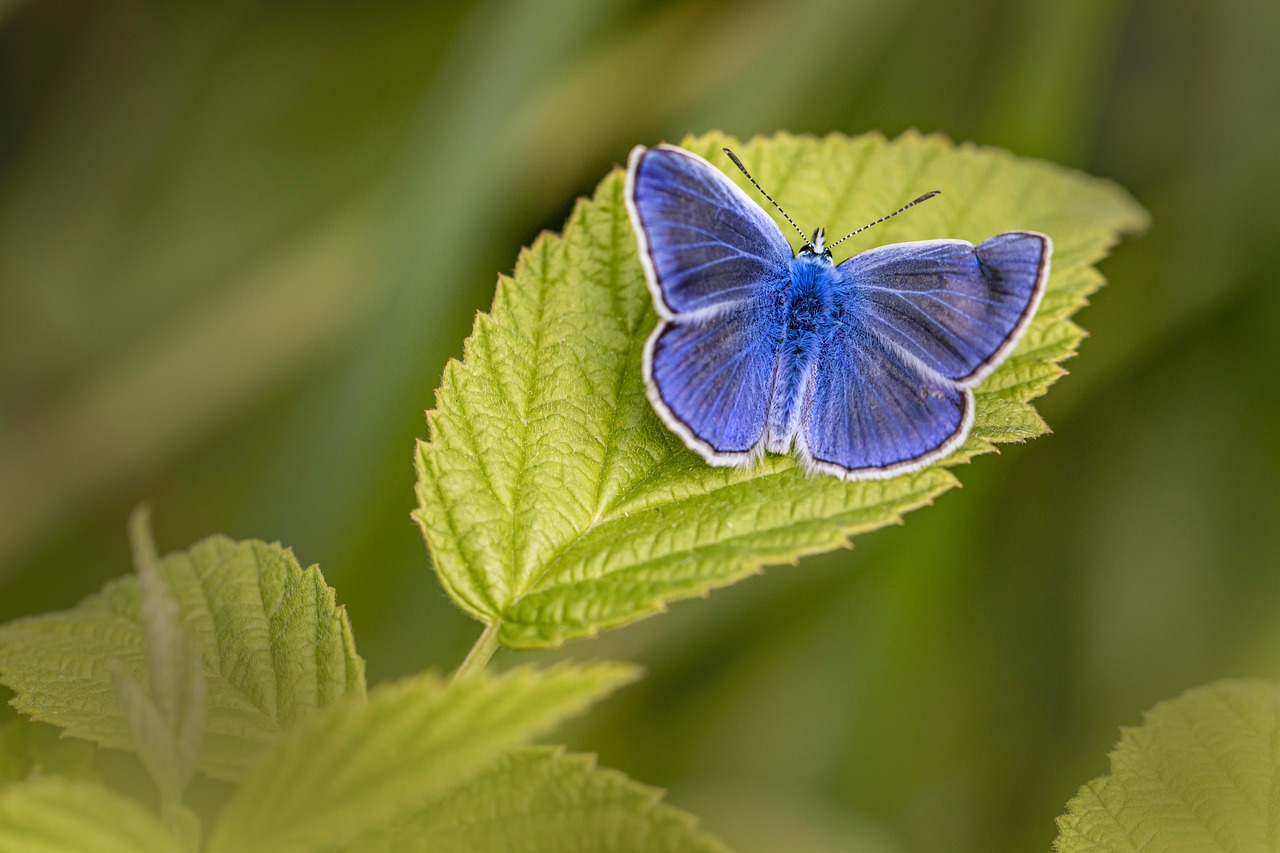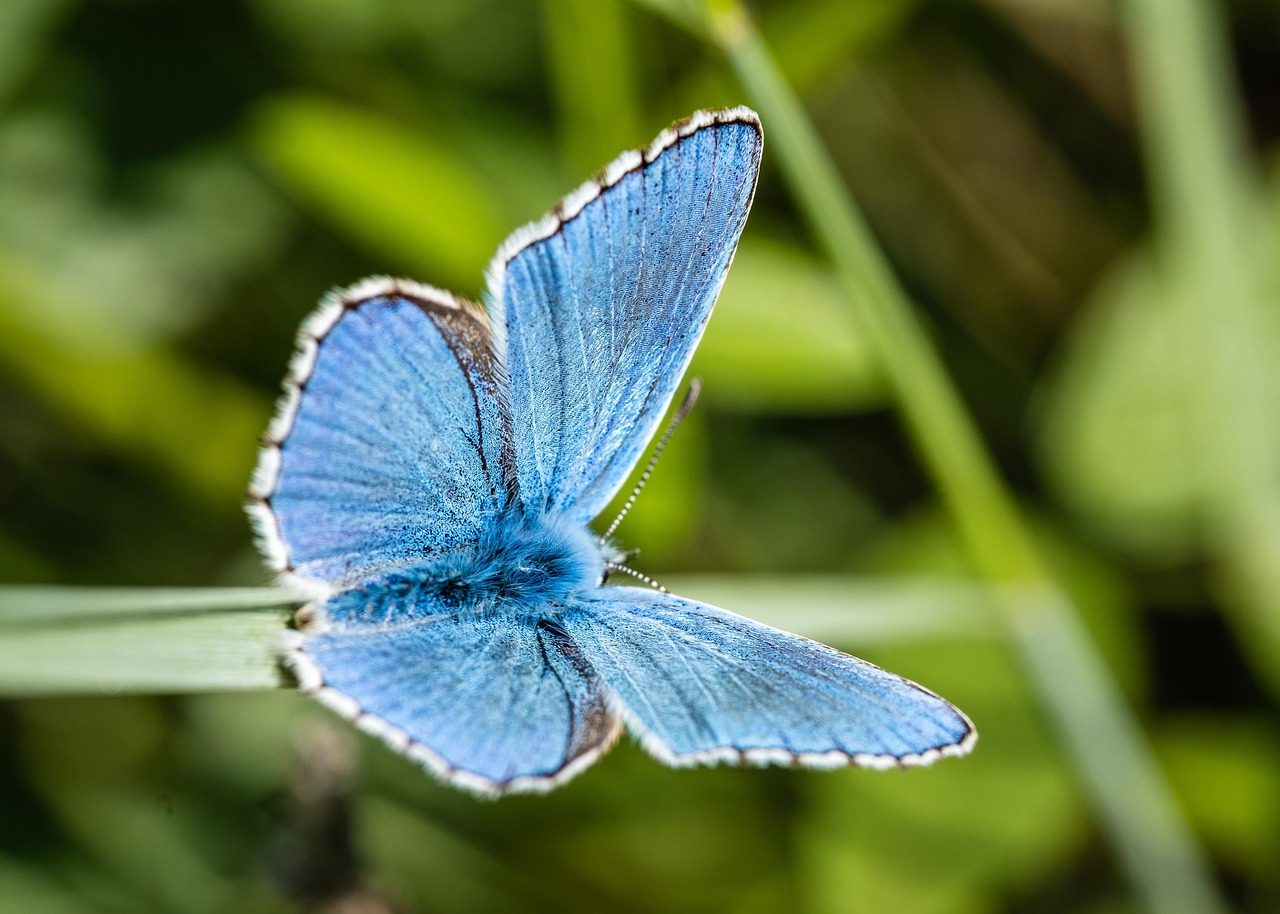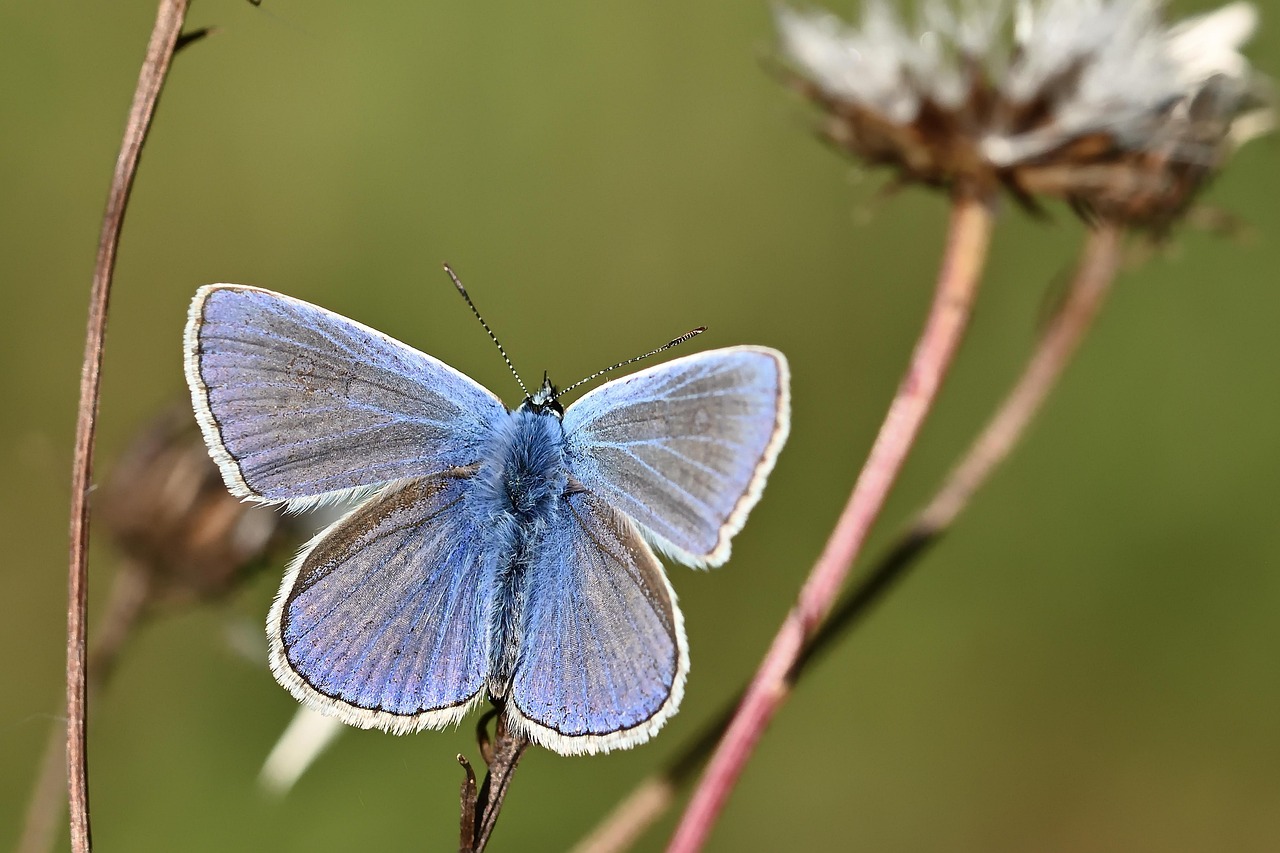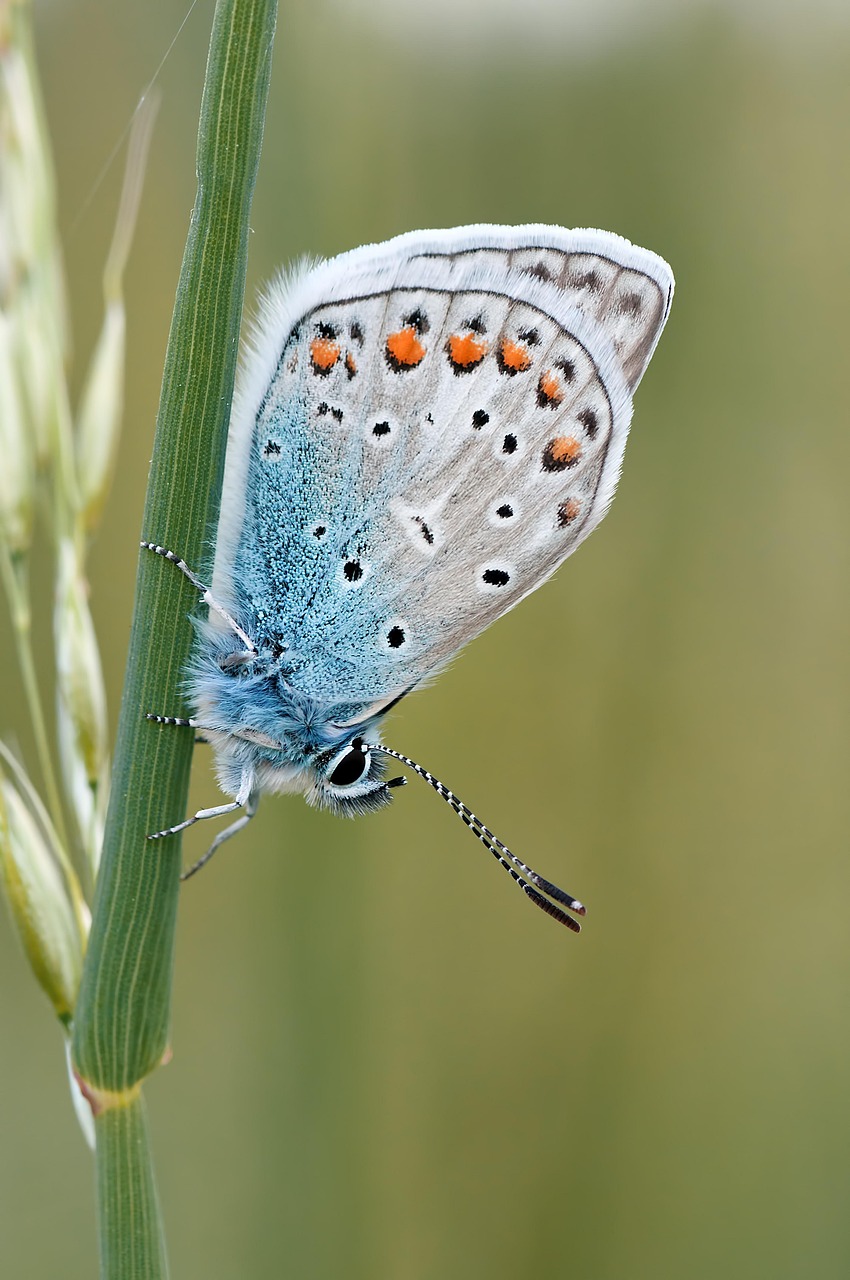The Karner Blue Butterfly thrives in specific habitats characterized by oak savannas and pine barrens. These environments provide essential resources such as nectar-rich flowers and host plants, primarily wild lupine, necessary for the butterfly’s life cycle and survival.
Understanding the Karner Blue Butterfly’s Habitat

The Karner Blue Butterfly (Plebejus melissa samuelis) is a small, vibrant species known for its striking coloration and delicate wings. Once prevalent across northeastern United States and parts of Canada, this butterfly has seen significant declines due to habitat loss and environmental changes. Understanding its habitat is crucial for conservation efforts aimed at protecting not only the butterfly but also the ecosystems it inhabits.
The primary habitat of the Karner Blue Butterfly includes open, sunny areas that are rich in wild lupine, its main larval food source. These habitats are typically characterized by low vegetation, which allows sunlight to penetrate effectively. The presence of nectar-producing plants is also vital, as adult butterflies rely on these sources for energy.
Karner Blue Butterflies are predominantly found in the following types of habitats:
- Oak savannas
- Pine barrens
- Grasslands
- Roadside edges and clearings
Each of these environments supports a unique ecological community that includes various plant species, insects, and other wildlife. The interplay between these elements creates a balanced ecosystem essential for the survival of the Karner Blue Butterfly.
In addition to the presence of wild lupine and nectar sources, the habitat must be maintained through appropriate land management practices. These practices may include controlled burns and selective cutting to prevent overgrowth. Without these interventions, the butterfly’s habitat can become overgrown with shrubs and trees, reducing the open space needed for its survival.
Key Characteristics of Karner Blue Butterfly Habitat
Understanding the characteristics of the Karner Blue Butterfly’s habitat helps in identifying potential conservation areas. The following table outlines essential features of these habitats:
| Feature | Description |
|---|---|
| Soil Type | Sandy or well-drained soils that support wild lupine growth. |
| Sunlight | Open areas with full sun exposure are crucial for adult activity. |
| Vegetation | Low-growing plants that include wild lupine and various flowering species. |
| Water Sources | Nearby water sources enhance the habitat’s overall biodiversity. |
These features highlight the intricate relationship between the Karner Blue Butterfly and its environment. Protecting these habitats ensures that future generations will continue to witness this beautiful butterfly in their natural surroundings.
Conservation efforts have increased awareness of the importance of preserving such unique ecosystems. Organizations and local governments are working together to restore and protect habitats critical for the survival of the Karner Blue Butterfly. Through dedicated efforts, there is hope for this species to flourish once again.
Threats to the Karner Blue Butterfly Habitat
Despite conservation efforts, the Karner Blue Butterfly faces numerous threats that jeopardize its habitat and survival. Understanding these threats is essential for implementing effective protection strategies. The following factors contribute significantly to the decline of the butterfly’s population:
- Habitat Destruction: Urban development, agriculture, and logging have led to the loss of critical habitats. As land is converted for human use, the areas necessary for the butterfly’s survival diminish.
- Invasive Species: Non-native plants can outcompete wild lupine and other native flora. This competition reduces the available food sources for both larvae and adult butterflies.
- Climate Change: Changes in temperature and precipitation patterns can alter the delicate balance of the ecosystems where these butterflies thrive. This may disrupt their life cycles and reduce their food supply.
- Pesticide Use: The application of pesticides in agricultural practices can have detrimental effects on butterfly populations. These chemicals not only harm adult butterflies but also affect their larvae.
Importance of Management Practices
Effective management practices are vital for the preservation of the Karner Blue Butterfly’s habitat. These practices focus on maintaining the ecological balance and ensuring the survival of essential plant species. Some recommended management strategies include:
- Controlled Burns: Implementing controlled burns helps to maintain open habitats by preventing the encroachment of woody plants. This practice encourages the growth of wild lupine and other flowering plants.
- Selective Cutting: Removing certain trees and shrubs allows for more sunlight to reach the ground, promoting the growth of low-lying vegetation that butterflies depend on.
- Invasive Species Management: Actively monitoring and removing invasive plant species can help restore native flora. This promotes a healthier ecosystem for the Karner Blue Butterfly.
- Community Involvement: Engaging local communities in conservation efforts fosters a sense of ownership and responsibility towards protecting habitats. Educational programs can raise awareness about the butterfly and its needs.
Restoration Projects for Karner Blue Butterfly Habitats
Restoration projects have been initiated across various regions to revive habitats suitable for the Karner Blue Butterfly. These projects focus on creating new habitats or restoring existing ones that have been degraded. Some key initiatives include:
- Habitat Restoration in New York: In areas like Albany Pine Bush Preserve, efforts are underway to restore oak savanna ecosystems. This includes planting wild lupine and managing invasive species.
- Habitat Management Plans: Several states have developed comprehensive habitat management plans that outline steps needed to preserve and restore butterfly habitats.
- Collaboration with NGOs: Non-governmental organizations work alongside government bodies to implement projects aimed at improving habitat conditions. These collaborations enhance resource sharing and expertise.
The Role of Research in Conservation
Research plays a crucial role in understanding the needs of the Karner Blue Butterfly and informing conservation practices. Ongoing studies focus on various aspects, including:
- Population Monitoring: Regular monitoring of butterfly populations helps identify trends and assess the effectiveness of conservation efforts.
- Habitat Preferences: Research into habitat preferences provides insights into what specific conditions are most beneficial for the butterfly’s life stages.
- Genetic Studies: Understanding genetic diversity within populations can inform breeding programs aimed at increasing resilience against environmental changes.
The combination of effective management practices, restoration projects, and ongoing research creates a robust framework for ensuring the survival of the Karner Blue Butterfly and its habitat. By addressing threats and enhancing conditions, we can contribute to a healthier ecosystem that supports this remarkable species.
Community Engagement and Citizen Science
Community engagement is a vital component in the conservation of the Karner Blue Butterfly. Local stakeholders, including residents, schools, and organizations, can play an essential role in supporting habitat conservation efforts. Involving the community not only increases awareness but also fosters a sense of ownership over local natural resources.

Citizen science programs have emerged as an effective way to involve the public in monitoring and protecting butterfly populations. These initiatives encourage individuals to participate in data collection, which can significantly enhance research efforts. The following are key aspects of community engagement:
- Education Programs: Workshops and educational materials can help teach community members about the Karner Blue Butterfly’s life cycle, habitat needs, and conservation challenges.
- Volunteer Opportunities: Involvement in habitat restoration efforts, such as planting native species or removing invasive plants, provides hands-on experience and fosters community spirit.
- Monitoring Programs: Citizen scientists can assist in population monitoring by reporting sightings of butterflies and their habitats. This data is invaluable for researchers and conservationists.
Successful Community-Based Conservation Initiatives
Several successful initiatives have demonstrated the power of community involvement in butterfly conservation. Some notable examples include:
- Albany Pine Bush Preserve Commission: This organization has engaged local volunteers in habitat restoration projects, leading to improved conditions for the Karner Blue Butterfly.
- Michigan’s Karner Blue Butterfly Recovery Plan: This plan integrates community outreach and education into its strategy, encouraging local residents to participate in conservation efforts.
- New Hampshire’s Butterfly Monitoring Network: A network of volunteers collects data on butterfly populations, contributing to a statewide understanding of the Karner Blue Butterfly’s status.
The Role of Local Governments and Organizations
Local governments and non-profit organizations play a crucial role in establishing policies and programs that promote the conservation of the Karner Blue Butterfly’s habitat. Effective collaboration between these entities can lead to more comprehensive conservation strategies. Key roles they play include:
- Policy Development: Local governments can implement zoning regulations that protect critical habitats from development and degradation.
- Funding and Resources: Providing financial support for restoration projects ensures adequate resources are available for effective habitat management.
- Research Collaboration: Partnerships between government agencies, academic institutions, and non-profits facilitate research efforts that inform conservation practices.
Creating Protected Areas
The establishment of protected areas is a vital strategy for conserving the Karner Blue Butterfly’s habitat. These designated areas can provide safe havens for both butterflies and other native species. The following factors are essential when creating protected areas:
- Identifying Key Habitats: Conducting thorough research to identify critical habitats that support viable butterfly populations is fundamental.
- Management Plans: Developing management plans for protected areas ensures that habitats are maintained effectively and sustainably over time.
- Public Access and Education: Creating opportunities for public access while educating visitors about the importance of conservation can foster appreciation for these ecosystems.
The Impact of Climate Change on Butterfly Habitats

Climate change is a pressing issue that affects ecosystems worldwide, including the habitats of the Karner Blue Butterfly. As temperatures rise and weather patterns shift, the delicate balance of these ecosystems is at risk. Several impacts of climate change on butterfly habitats include:
- Shifts in Plant Phenology: Changes in plant blooming times can disrupt the availability of food resources for adult butterflies, affecting their survival rates.
- Habitat Loss: Increased frequency of extreme weather events, such as storms and droughts, can lead to habitat destruction and fragmentation.
- Disease Spread: Warmer temperatures may promote the spread of diseases that affect both plants and animals within these ecosystems.
Addressing climate change requires a multi-faceted approach involving adaptation strategies to enhance the resilience of butterfly habitats. Through community engagement, effective policy-making, and ongoing research, it is possible to mitigate some of the impacts of climate change on the Karner Blue Butterfly’s habitat.
The Importance of Biodiversity in Butterfly Habitats
Biodiversity plays a crucial role in the health and stability of ecosystems, including those that support the Karner Blue Butterfly. A diverse ecosystem is better equipped to withstand environmental changes and disturbances. The presence of various plant species ensures that butterflies have access to multiple food sources at different times throughout their life cycles.
Furthermore, biodiversity enhances resilience against pests and diseases. When numerous species coexist, it creates a balanced environment where one species cannot dominate or cause widespread harm. For the Karner Blue Butterfly, the following aspects of biodiversity are particularly significant:
- Plant Diversity: A variety of nectar-producing plants and host plants, such as wild lupine, supports the butterfly at different life stages.
- Animal Interactions: Diverse animal populations contribute to the overall health of the ecosystem, ensuring that pollination and other ecological functions occur effectively.
- Soil Health: A rich variety of soil organisms contributes to nutrient cycling and soil fertility, which influences plant growth and habitat quality.
Community-Led Conservation Success Stories

Numerous community-led initiatives have successfully contributed to the conservation of the Karner Blue Butterfly and its habitat. These stories exemplify the positive impact that informed and engaged communities can have on local ecosystems. Some notable examples include:
- The Karner Blue Butterfly Recovery Initiative in Wisconsin: This initiative involves collaboration between state agencies, conservation organizations, and local communities. It focuses on habitat restoration, public education, and research to enhance butterfly populations in the state.
- The Pine Bush Preserve in New York: This preserve has become a model for community involvement, where volunteers participate in habitat management and educational programs that raise awareness about the butterfly’s needs.
- Michigan’s Restoration Efforts: Various organizations in Michigan are dedicated to restoring oak savanna habitats, emphasizing community engagement in monitoring and habitat improvement efforts.
Future Directions for Conservation
The future of the Karner Blue Butterfly relies heavily on continued commitment to conservation strategies that involve adaptive management, community engagement, and scientific research. Key future directions include:
- Enhanced Research Collaboration: Strengthening partnerships between academic institutions, government agencies, and non-profits will lead to more effective research outcomes and conservation strategies.
- Increased Funding for Conservation Programs: Securing consistent funding will enable long-term habitat restoration projects and effective management practices that benefit the Karner Blue Butterfly.
- Public Awareness Campaigns: Raising awareness about the butterfly’s plight can galvanize public support for conservation initiatives, encouraging more individuals and organizations to take action.
Conclusion
The Karner Blue Butterfly serves as a poignant reminder of the delicate balance within ecosystems and the importance of conserving biodiversity. Understanding its habitat requirements, threats, and conservation strategies is crucial for ensuring its survival. The collective efforts of individuals, communities, governments, and organizations can create a positive impact on the butterfly’s future.
By actively engaging in conservation efforts, investing in research, and fostering community involvement, we can help protect this remarkable species and its unique biome. Every action counts in the journey towards preserving not only the Karner Blue Butterfly but also the diverse ecosystems that support it. Together, we can ensure that future generations will continue to appreciate this beautiful butterfly in its natural habitat.
